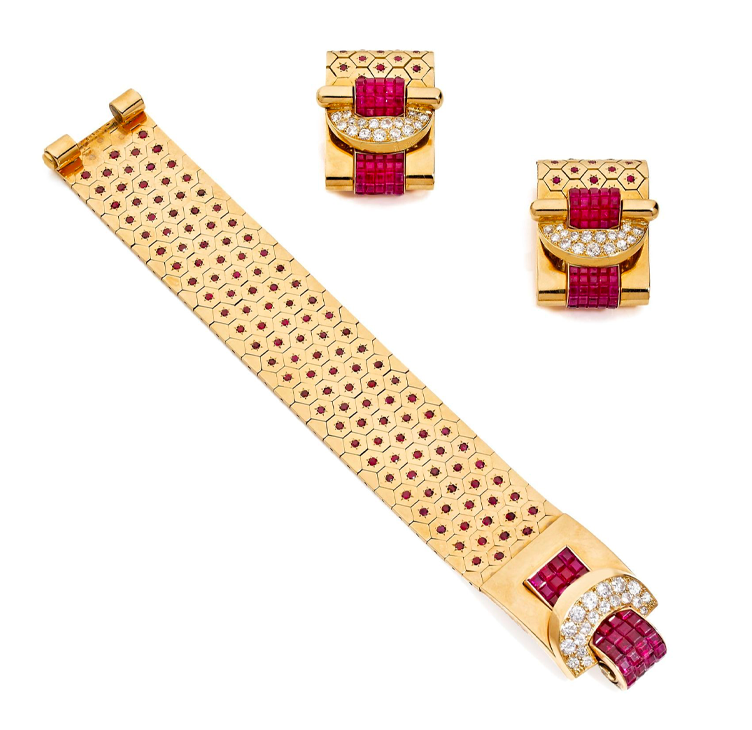Van Cleef & Arpels : behind the Mystery Set
One of the features that sets apart Van Cleef & Arpels in the jewelry world is its revolutionary approach when it comes to technique and innovation. The company has always paid great attention to the setting of the stones in its jewelleries to the point that in 1933 a patent for a new technique inspired from the 19th century Roman micromosaic was filed.
This ingenious innovation enables to fix stones without any visible mount and therefore allowing gems to express their full capacity to reflect and play with the light. Precious stones and diamonds become mysteriously fixed without any visible setting that usually covers part of them and interrupt the harmony in the viewer’s eye.
Mystery Set Assembling
© Van Cleef & Arpels
This Mystery set has been imitated but never matched since just a handful of skilled craftsmen can master the excellence and precision this technique requires. It first begins with the choice of the stones which needs to be perfect : the same color, intensity and a gathering requiring time and patience. From behind, the stones are distributed in very thin boxes forming rails. Each stone needs to be trimmed in point so that it can be perfectly placed to reach its exact position in the lattice.This new technique was first used to create parts of little objects such as box clasps before being applied to more complex and curved pieces such as naturalist brooches or rings with numerous volumes and interlockings. Several stones can be set using this technique but emeralds being fragile are rarely used.
Van Cleef & Arpels
Drawing of a table Clock, cira 1995
© Van Cleef & Arpels Archives
In 1933, a new creation reinforced the notoriety of Van Cleef & Arpels: the “Minaudière”. This little precious box, that could be used as an evening bag, is made of many little storages and the first models created sometimes featured clasps paved with stones using the Mystery Set.
In 1937 during the World Exposition Van Cleef & Arpels unveiled masterpieces using this new technique. Flowers, one of the house's favorite themes since its creation, are especially suitable for this mystery setting, giving birth to impressive pieces such as the famous chrysanthemum brooch. Then, from 1937 to 1939, the production of the jewelry house reached new innovative and imaginative highs.The Mystery set kept evolving and got more and more sophisticated, thus enabling the creation of more complex pieces including exceptional flower brooches.
Van Cleef & Arpels
”Chrysanthème" Brooch (1937)
© Van Cleef & Arpels
In the 1960s the floral theme was still used and the Mystery set was applied to new forms such as the clover clip. Finally, another iconic piece using this technique is the Ludo bracelet (named after the nickname given to Louis Arpels). This soft gold band is made of a mesh of patterns sprinkled with rubies or diamonds. It is composed of a rich clasp, reminiscent of belt buckles, composed of precious stones set with the mystery technique which is also applied on the earrings coming with it.
Van Cleef & Arpels
A rare set of “LUDO” bracelet and earrings
Ruby, Diamonds, 18K Yellow and Pink Gold
Circa 1938
© Artcurial
Today the Mystery set, which is almost 100 years old a technique, still raise fascination and is used by the house to serve the design of numerous of its pieces and adapting to the new current trends and themes used by the brand such the aquatic world, vegetal, dancing etc…





